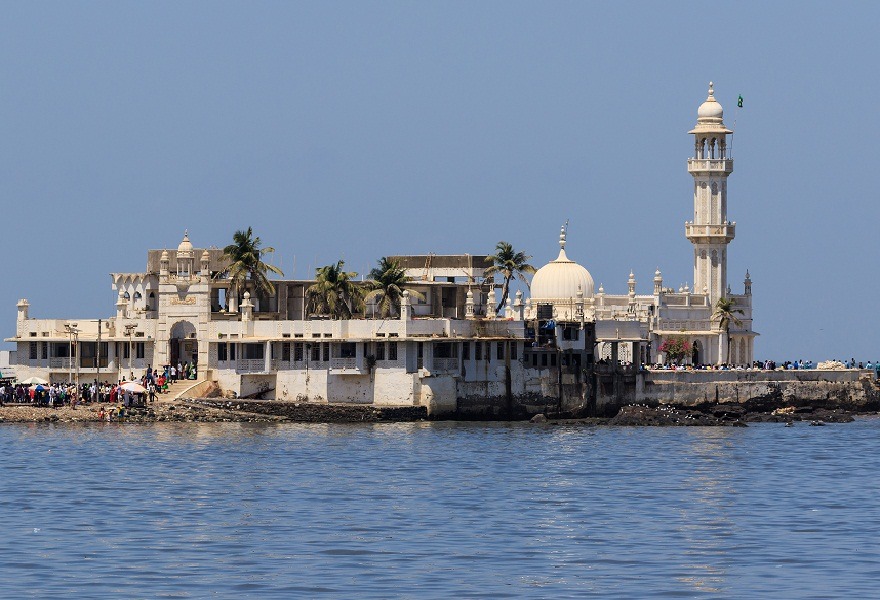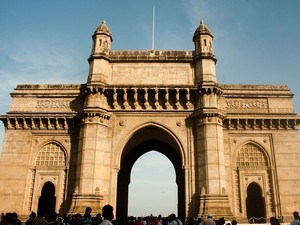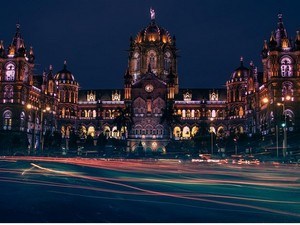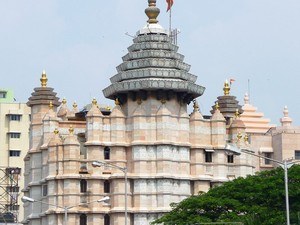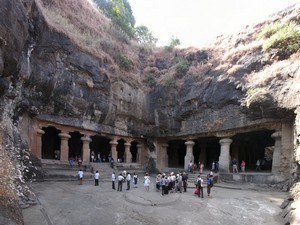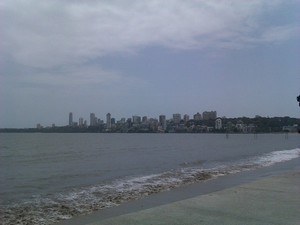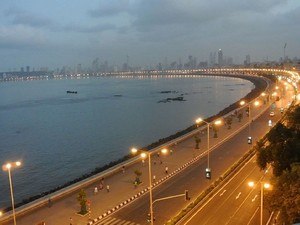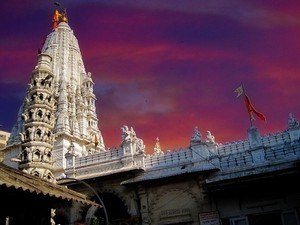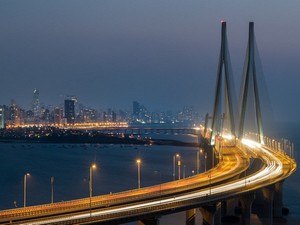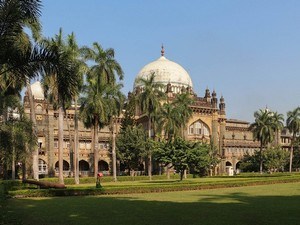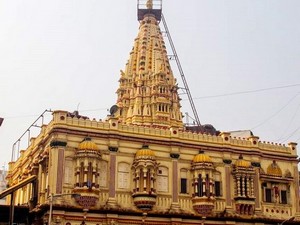Haji Ali Dargah, Mumbai - Timings, Festivals, History, Darshan, Pooja Timings
Photo Credit: Flickr
 India | Maharashtra | Mumbai
India | Maharashtra | Mumbai
 #10 of 46 Places to Visit in Mumbai
#10 of 46 Places to Visit in Mumbai
 Distance (From Chhatrapati Shivaji Terminus): 6 Kms
Distance (From Chhatrapati Shivaji Terminus): 6 Kms
 Trip Duration (Including Travel): 1 Hour
Trip Duration (Including Travel): 1 Hour
 Place Location: Close To Sea Shore Of Worli
Place Location: Close To Sea Shore Of Worli
 Transportation Options: Bus / Cab / Auto
Transportation Options: Bus / Cab / Auto
 Travel Tips: None
Travel Tips: None
About Haji Ali Dargah
At a distance of 6 Km from Mumbai Chhatrapati Shivaji Terminus, Haji Ali Dargah is a renowned Islamic shrine located on a small islet off the coast of Worli in southern Mumbai, in the state of Maharashtra, India. The Dargah is dedicated to the saint, a wealthy merchant from Bukhara (now Uzbekistan) who renounced his riches and became a spiritual figure. The Haji Ali Dargah contains the tomb of Haji Ali Shah Bukhari. This is one of the most recognisable landmarks of Mumbai, and among the major places to visit in Mumbai.
History of Haji Ali Dargah
The Haji Ali Dargah was established in 1431 CE to honor the Muslim saint Sayyed Peer Haji Ali Shah Bukhari, who originated from Bukhara, now part of Uzbekistan. He renounced all his material possessions prior to embarking on a pilgrimage to Mecca. Bukhari journeyed across the globe during the early to mid-15th century and ultimately settled in Mumbai. Throughout his life, he disseminated knowledge about Islam, attracting numerous devotees who frequently visited him. Although the original Dargah dates back over 600 years, the current structure was erected between 1960 and 1964.
Mythology of Haji Ali Dargah
The narrative surrounding Haji Ali Dargah is steeped in an intriguing mix of myth and faith. One story recounts how Pir Haji Ali Shah Bukhari came across a destitute woman who accidentally spilled her oil, which was crucial for her livelihood. Moved by her plight, the saint touched the ground, miraculously causing oil to flow once more. However, he was troubled by the guilt of disrupting the natural order of the Earth. As he approached the end of his life, he directed his followers to refrain from burying him in a traditional graveyard, instead instructing them to cast his shroud ('kafan') into the sea, permitting it to be interred wherever it might land. In accordance with his wishes, they recovered the casket from a rocky ledge off the coast of Worli. It was at this location, in 1431, that the splendid Haji Ali Dargah, which includes both a tomb and a Dargah, was constructed in his memory. This revered Mumbai landmark stands as a testament to the life and teachings of Pir Haji Ali Shah Bukhari, a place where legend intertwines with faith.
Architecture of Haji Ali Dargah
The Haji Ali Dargah in Mumbai exemplifies the beauty of Indo-Islamic architecture, showcasing a remarkable fusion of Mughal and Arabian styles. Spanning an area of 5000 square meters, the complex comprises three primary structures: a Dargah, a mosque, and a sanatorium. The vast courtyard, adorned with immaculate white marble, reflects the magnificence of Mughal-era edifices.
At the heart of the complex lies the mausoleum of Saint Pir Haji Ali Shah Bukhari, characterized by a grand central dome and four smaller spires at each corner. Inside the mausoleum, the tomb is crafted from white marble, featuring arched frames, intricate mirror work, and a silver crown. A sacred cloth inscribed with verses from the Quran covers the saint's revered relics. The main hall of the shrine is embellished with colored glass on the marble pillars, which are inscribed with the ninety-nine names of Allah. The current Dargah structure consists of two levels, providing distinct prayer areas for men and women.
Additionally, there is a three-story sanatorium and a spacious foyer known as Qawwal Khana, where qawwali performances are held in honor of Haji Ali. During these sessions, particularly on Friday nights, the atmosphere transforms into a sanctuary of peace and spirituality. Experiencing the Qawwali at Haji Ali Dargah is an unforgettable opportunity that should not be overlooked when visiting this remarkable site.
Festivals of Haji Ali Dargah
The main festivals celebrated at Haji Ali Dargah in Mumbai include the Urs, commemorating the death anniversary of Pir Haji Ali Shah Bukhari, and Eid-E-Milad-un-Nabi, marking the birth anniversary of Prophet Mohammad. The Urs is celebrated on the 16th of each Islamic month and features significant prayers, milad, and food distribution. Eid-E-Milad-un-Nabi occurs on the 12th of Rabi-al Awal, during which the Dargah Trust arranges an event for the public to view the sacred relics of Prophet Mohammad. Additionally, the dargah organizes special activities throughout the Islamic holy month of Ramadan, as well as during the festivals of Eid-ul-Fitr and Eid-ul-Adha. It is important to mention that Fridays attract a larger number of visitors due to the weekly congregational prayers, creating a lively atmosphere but also leading to increased crowding.
Dress Code & Other Restrictions of Haji Ali Dargah
Haji Ali Dargah has implemented a dress code for its visitors, requiring them to don suitable and modest clothing, with a preference for traditional Indian attire. Men are encouraged to wear a dhoti or pajama along with an upper garment, or alternatively, formal trousers and shirts. Women are advised to choose a saree, half saree, or chudidhars, and it is customary for them to cover their heads as well. It is recommended to avoid modern attire such as mini-skirts, shorts, torn jeans, and sleeveless tops when visiting the Dargah.
The Dargah welcomes individuals from all religious backgrounds. Non-Muslims are permitted to enter the complex, observe the rituals, and appreciate the tranquil atmosphere, but they show respect for the sacred site and comply with the dress code and behavioral expectations.
Haji Ali Dargah Timings
Monday: 5:30 AM - 10 PM
Tuesday: 5:30 AM - 10 PM
Wednesday: 5:30 AM - 10 PM
Thursday: 5:30 AM - 10 PM
Friday: 5:30 AM - 10 PM
Saturday: 5:30 AM - 10 PM
Sunday: 5:30 AM - 10 PM
Haji Ali Dargah Entry Fee
Entry is Free
Best Time to Visit Haji Ali Dargah
The optimal period to visit Haji Ali Dargah is from October to February, when the weather is mild and favorable for sightseeing, allowing visitors to comfortably explore the Dargah and its vicinity. Attending during the Muslim festivals of Eid ul-Fitr and Eid ul-Adha can be especially fulfilling, as the shrine is filled with worshippers and radiates a unique spiritual atmosphere. For those wishing to avoid large crowds, it is advisable to visit on weekdays or during non-festival times, preferably in the early morning or late afternoon. It is important to note that Fridays attract a significant number of visitors due to the weekly congregational prayers, creating a lively environment but also leading to a more congested experience. Additionally, it is essential to check tide schedules prior to your visit, as the causeway to the Dargah may become submerged during high tide, making it inaccessible for several hours. It is recommended to refrain from visiting Mumbai during the summer and monsoon seasons, as the city experiences elevated temperatures and heavy rainfall, which can complicate access to the Dargah due to its coastal location and narrow causeway.
How to Reach Haji Ali Dargah
Chhatrapati Shivaji International Airport, located approximately 17 kilometers from Haji Ali Dargah, serves as the closest airport. It offers extensive flight connections to prominent international destinations such as Dubai, Sri Lanka, Thailand, Malaysia, Singapore, the USA, and Europe, as well as various domestic locations including Hyderabad, Bangalore, Chennai, Delhi, Jaipur, Kochi, Trivandrum, Kolkata, and Goa. Additionally, the Victoria Terminus and Bombay Central Stations in Mumbai provide robust train services linking the city to major towns and cities across India, including Delhi, Kolkata, Chennai, Hyderabad, and Bangalore. Mumbai is also efficiently connected by bus to cities like Bangalore, Hyderabad, Mangalore, Goa, Ahmedabad, and Pune. Visitors can reach the Dargah by taking taxis, auto rickshaws or buses to the Worli bay, followed by a short walk to the shrine. A narrow path links the shrine to the city, requiring devotees to walk approximately 500 yards from the bay to the dargah. The dargah is inaccessible during high tide as the causeway leading to the dargah may be submerged during high tide.



